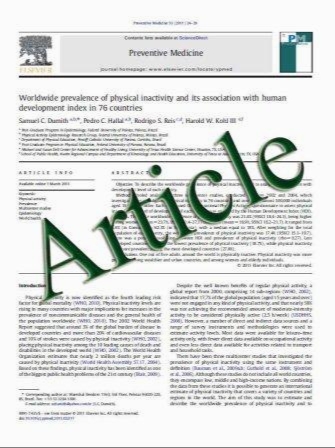Tooth wear in the deciduous dentition of 5–7-year-old children: risk factors
- نوع فایل : کتاب
- زبان : انگلیسی
- مؤلف : Tarsitsa Gatou & Eleni Mamai-Homata
- چاپ و سال / کشور: 2011
Description
This study was conducted to investigate the distribution and severity of tooth wear in deciduous dentition and its relationship with possible risk factors. A stratified cluster sample of 243 5–7-year-old children was examined using the tooth wear index of Smith and Knight, and their exposure to intrinsic and extrinsic risk factors was retrospectively investigated through a structured questionnaire. The severity of wear was quantitatively estimated by the number of surfaces with affected dentine and by the cumulative score of the sextants, based on the Basic Erosive Wear Examination scoring system. Only 1.6% of the children were tooth wear free, whereas 45.6% had moderate to severe wear involving dentine. Maxillary canines were the most affected teeth (83.2%), and occlusal/incisal the most affected surfaces (52.7%). The likelihood of tooth wear involving dentine was greater in boys than girls (OR=1.72), in immigrants than in Greeks (OR=1.93), and in 6- and 7-year olds than in 5-year olds (OR=2.78 to 2.93). After adjustment for age, gender, and nationality, exposure to several dietary factors and especially to soft drinks was found to significantly affect the prevalence (OR=1.27) and the severity of tooth wear. Every additional serving/week of consumption of soft drinks increases the number of surfaces with dentine affected by 0.03 per year (p<0.05) and the cumulative score of sextants by 0.04 (p<0.05). The cluster of children with the higher prevalence and severity of tooth wear had an average exposure to soft drinks of 10 servings/week for a duration of 4 years. The cumulative score of sextants was better predicted by the assessed risk factors, in comparison with the number of surfaces with affected dentine. Tooth wear is a common condition in children, related both to the physiological process of aging of dentition and to the erosive effect of dietary factors. Strategies to reduce the intake of soft drinks in children are expected to have multiple benefits preventing tooth wear in childhood and in later life, as well as many other general and oral health diseases.
Clin Oral Invest DOI 10.1007/s00784-011-0586-z Received: 24 January 2011 / Accepted: 22 June 2011


